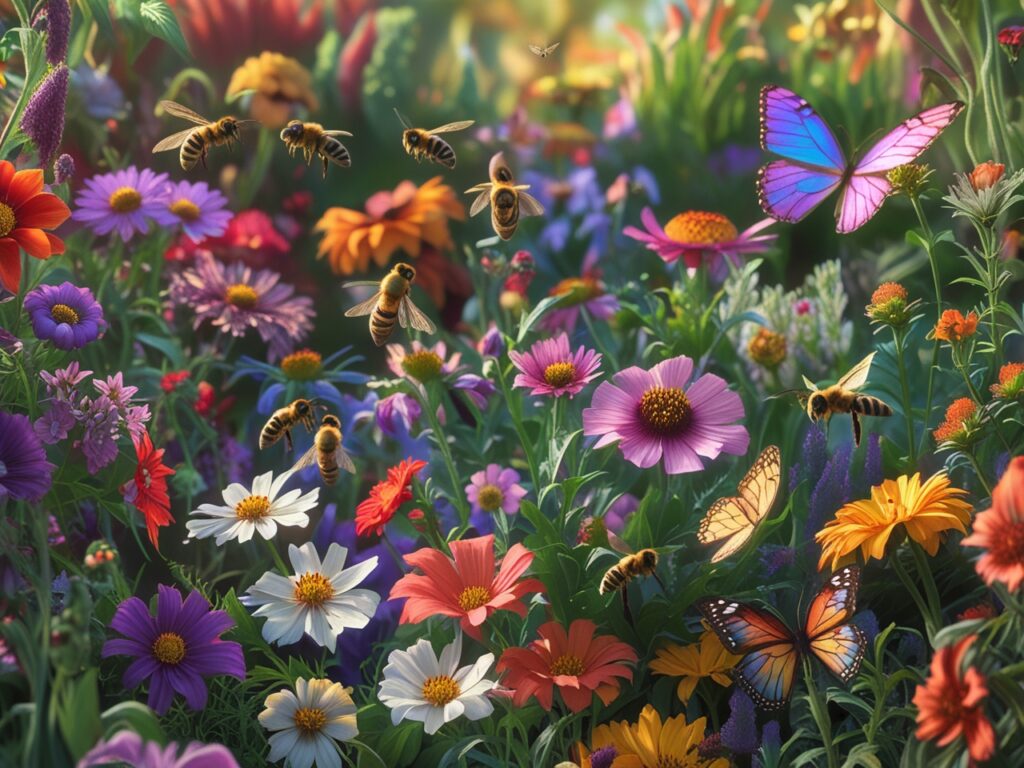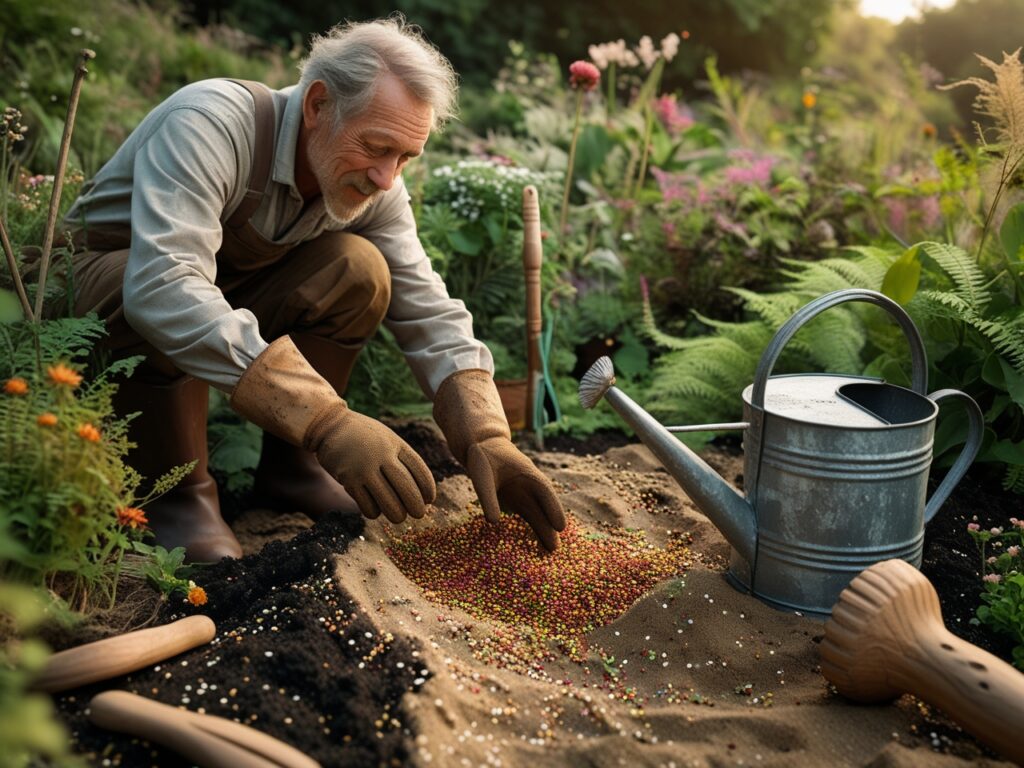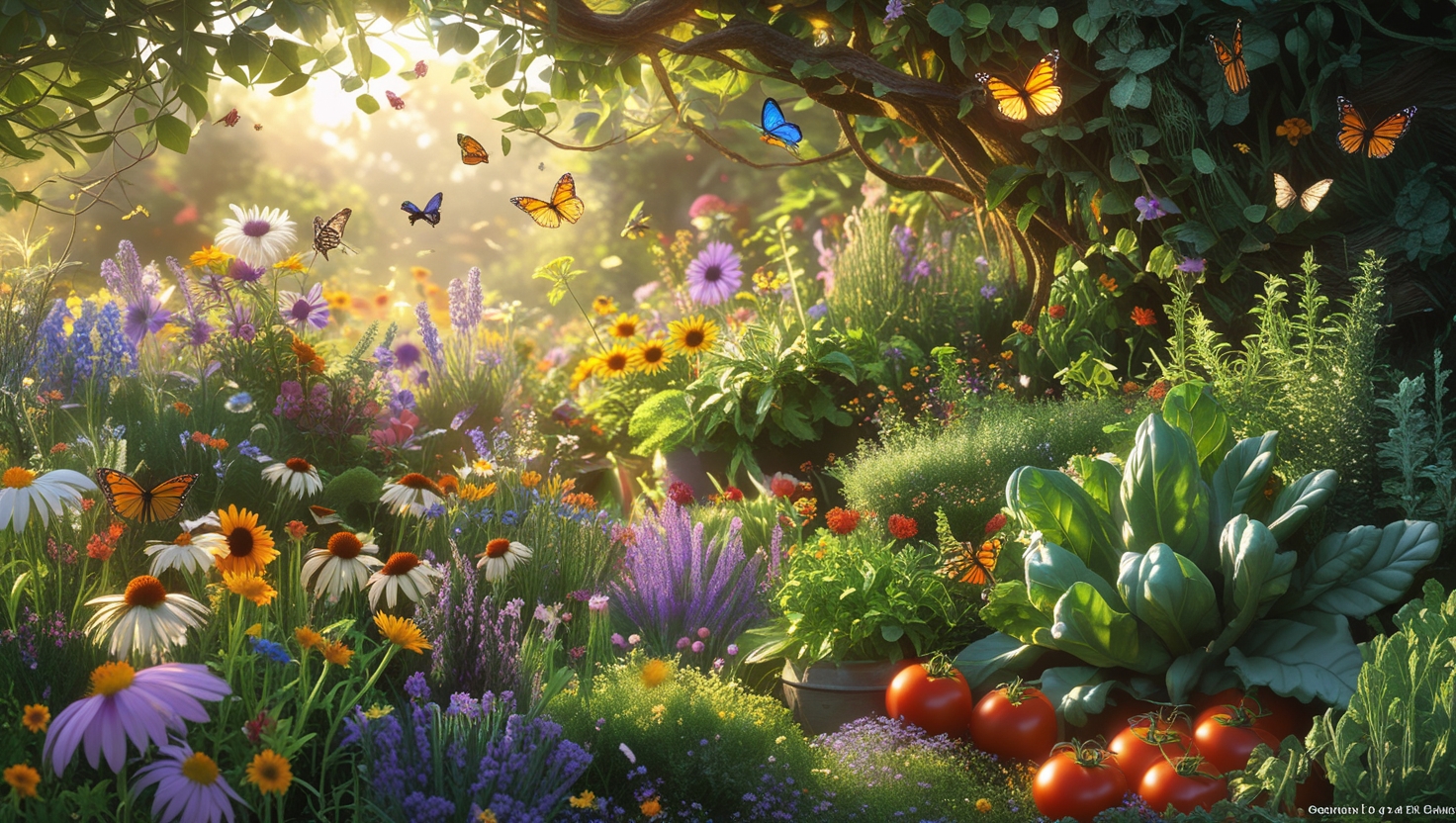Discover the art of chaos gardening, a growing trend that celebrates nature’s unpredictability by turning your garden into a vibrant, self-sustaining ecosystem. With minimal effort and maximum surprise, chaos gardening offers a refreshing alternative to traditional gardening methods. This guide dives deep into the origins, benefits, and steps to create your own chaos garden while embracing its wild beauty.
What Is Chaos Gardening?
The Origins and Philosophy
Chaos gardening is rooted in ancient practices such as “broadcast seeding,” where farmers scattered seeds by hand to cover fields quickly. This method evolved into a modern philosophy that mimics the diversity of wild meadows and cottage gardens. Instead of structured rows, seeds are mixed and scattered freely, allowing nature to determine the outcome.
How It Differs From Traditional Gardening
Traditional gardening emphasizes order—plants are grouped by type, arranged in rows, and spaced meticulously. Chaos gardening abandons these rigid rules, creating a tapestry of color and texture that changes with each season. It’s unpredictable, low-maintenance, and filled with surprises, making it perfect for gardeners who value spontaneity.
Why Chaos Gardening Is Booming
Market Trends and Social Buzz
Chaos gardening has captured the imagination of millions, with Pinterest searches rising 300% in 2025. Viral TikTok videos showcase lush, biodiverse gardens, inspiring new gardeners to try this unconventional method. Seed companies are now offering tailored mixes specifically for chaos gardening, further fueling its popularity.
Environmental and Lifestyle Benefits
- Biodiversity Boost: Chaos gardens attract bees, butterflies, and birds, creating thriving ecosystems.
- Low Maintenance: Less watering, mowing, and fertilizing compared to conventional gardens.
- Relaxing and Liberating: Perfect for busy people and beginners seeking sustainable gardening solutions.
Little-Known Fact: The Hidden History of Seed Scattering
Broadcast seeding, the ancient practice of scattering seeds, laid the foundation for chaos gardening. While rarely discussed today, it was a vital technique for covering large agricultural fields efficiently.
Getting Started With Chaos Gardening
Choosing the Right Spot
Chaos gardens thrive in sunny locations that receive at least six hours of sunlight daily. Whether you use raised beds, containers, or open ground, the key is selecting a space where plants can grow freely without heavy intervention. Forgotten corners of your yard or areas with poor grass growth are ideal.
Soil Prep: The Minimalist Approach
- Remove large weeds and debris.
- Loosen the topsoil lightly with a rake.
- Avoid over-tilling to preserve beneficial soil microbes.
Little-Known Fact: Why Old Seeds Often Outperform New Ones
Don’t throw away expired seeds! Chaos gardening gives these overlooked resources a second life. Studies reveal that even old seeds can sprout effectively, contributing to genetic diversity in your garden.
Selecting Seeds for Success
Best Plants for Chaos Gardening
- Flowers: Sunflowers, cosmos, wildflowers, marigolds.
- Vegetables: Radishes, beans, salad greens, carrots.
- Herbs: Basil, dill, cilantro, chives.
Mixing Edibles, Flowers, and Herbs
Grouping seeds by similar needs—such as sun exposure or watering frequency—ensures harmony. Combining fast-growing plants with slower ones prevents aggressive species from taking over.

Little-Known Fact: Native Species and Pollinator Power
Native plants not only require less care but also attract local pollinators like bees and butterflies. Including native wildflowers can double the number of pollinators in your garden, supporting biodiversity.
Step-by-Step: Planting Your Chaos Garden
Mixing and Scattering Seeds
- Combine seeds in a bucket with sand or compost for even distribution.
- Scatter seeds freely across the soil—no rows, no rules.
- Lightly cover seeds with soil and gently pat them down.
Watering and First Growth
- Water the area after planting to kickstart germination.
- Use warm water to boost sprouting rates, especially for hard-shelled seeds.

Little-Known Fact: Warm Water’s Secret Role in Germination
Warm water mimics spring rain, enhancing germination by up to 25%. This technique is especially effective for tough seeds that require extra energy to sprout.
Caring for Your Chaos Garden
Watering, Weeding, and Letting Go
- Water once or twice a week, depending on rainfall.
- Weed only if aggressive plants threaten the balance.
- Resist the urge to micromanage—let nature lead the way.
Dealing With Surprises and Setbacks
Chaos gardens are unpredictable. Some plants will thrive while others may fail. Embrace these surprises and adjust your seed mix next season if necessary.
Little-Known Fact: How Self-Seeding Plants Build Resilience
Plants that self-seed year after year strengthen your garden’s ecosystem, creating a dynamic and ever-evolving landscape.
Real-Life Chaos Gardening Stories
Successes and Surprises
Online communities like Reddit and YouTube are filled with inspiring chaos gardening experiences. One gardener scattered leftover seeds and ended up with a mix of blooms and veggies, while another found salad greens outpaced their sunflowers, which struggled in shaded areas.
User Reviews and Testimonials
- “I was overwhelmed by garden planning, so I tried chaos gardening. Now my yard is full of flowers, bees, and butterflies!”
- “It started as a mess, but with a little patience, it turned into a beautiful, vibrant space.”
Little-Known Fact: Chaos Gardens and Urban Wildlife
Chaos gardens in cities attract twice as many pollinators and birds as traditional lawns, supporting urban ecosystems in surprising ways.
Common Pitfalls and How to Avoid Them
Weeds, Overcrowding, and Misconceptions
Chaos gardens aren’t entirely maintenance-free. Weeds can invade, overcrowding may stunt growth, and not all seeds thrive together. Address these challenges by thinning plants and grouping seeds based on their needs.
Expert Tips for a Balanced Garden
- Plan zones for different plant types.
- Use a mix of annuals and perennials.
- Embrace some weeds—dandelions and clover support pollinators.
Chaos Gardening in the USA, Canada, and Beyond
Regional Adaptations
In North America, native wildflowers excel, while drought-tolerant species thrive in arid regions. Canadian gardeners can focus on cold-hardy plants, while southern U.S. gardens benefit from heat-loving flowers and herbs.
Global Perspectives
Chaos gardening is gaining traction worldwide, from English cottage gardens to urban rooftops in Asia. Wherever you live, this adaptable approach can fit your climate and space.
Frequently Asked Questions
Fast-growing plants like radishes and salad greens can sprout within 2–4 weeks.
Absolutely! Expired seeds often sprout well, especially in mixed plantings.
Mixed gardens attract beneficial insects, reducing pest issues naturally.
Yes, but some weeding and thinning are necessary to maintain balance.
Actionable Takeaways
- Start Small: Choose a sunny spot and experiment with a mix of seeds.
- Water Wisely: Use warm water for germination and adjust based on rainfall.
- Embrace Surprises: Let go of control and enjoy the unexpected beauty of nature.
- Plan for Next Season: Adjust your seed mix based on what thrives.
- Support Biodiversity: Include native species to attract pollinators and wildlife.
Chaos gardening is more than a trend—it’s a joyful, sustainable way to garden that lets nature take the lead. By embracing its unpredictable beauty, you’ll create a vibrant, ever-changing space that supports both wildlife and your own sense of wonder.
